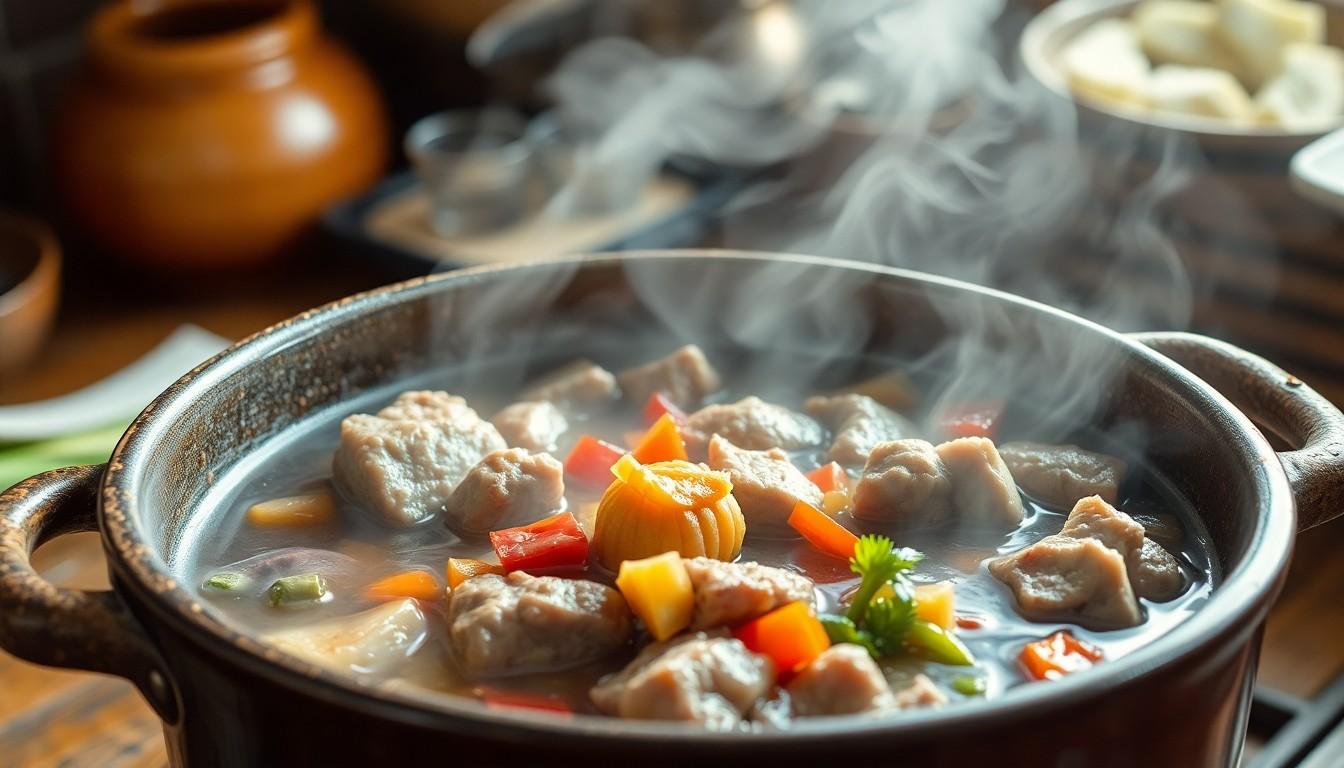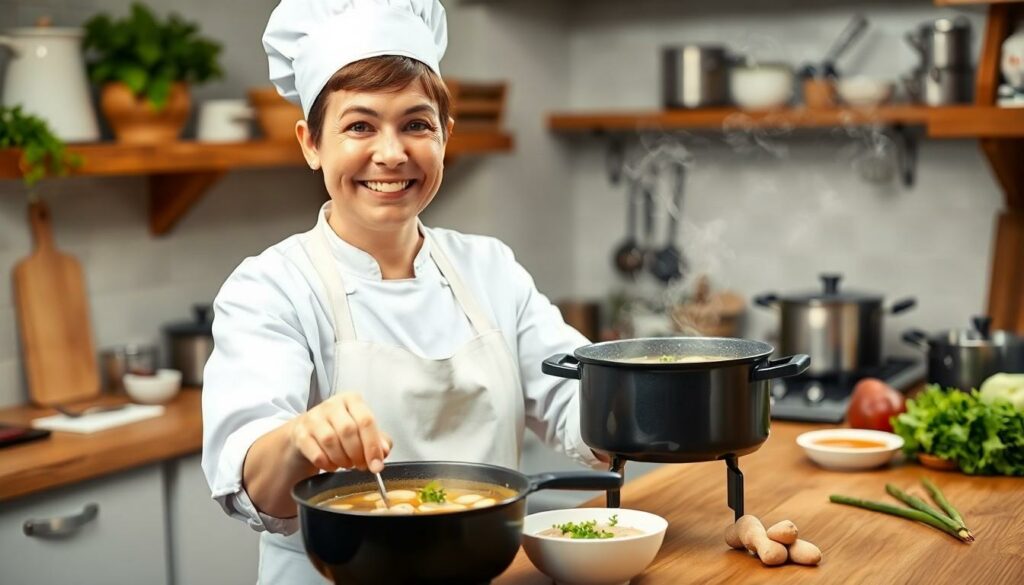Cooking can sometimes feel like a high-stakes game show, especially when it comes to figuring out the perfect cooking time for wantrigyo. This delightful dish is a crowd-pleaser, but getting the timing just right can make or break your culinary masterpiece. Fear not, aspiring chefs! With a bit of guidance, you’ll transform from a kitchen novice into a wantrigyo wizard in no time.
How Long Should I Cook Wantrigyo
Wantrigyo serves as a popular dish in various cuisines. Many enjoy its unique combination of flavors and textures.
What Is Wantrigyo?
Wantrigyo refers to a savory dish typically made from tender meat, vegetables, and spices. The preparation demands attention to detail, allowing the ingredients to meld harmoniously. Chefs often experiment with different types of meat, such as chicken or pork, adapting the recipe to personal preferences. Specific cooking methods like braising or slow-cooking enhance the dish’s rich flavors. Each variant offers a unique tasting experience, making wantrigyo a versatile option for many occasions.
Nutritional Benefits of Wantrigyo
Wantrigyo provides a balanced meal rich in essential nutrients. It’s an excellent source of protein, which supports muscle growth and repair. Vegetables used in the dish contribute vital vitamins and minerals, promoting overall health. The inclusion of spices often adds antioxidant properties, which can help combat inflammation. As a complete meal, wantrigyo also supports energy levels, making it suitable for a diverse range of dietary needs. Consuming this dish leads to numerous health benefits while satisfying taste preferences.
Cooking Wantrigyo

Cooking wantrigyo requires attention to timing for the best results. Various factors influence how long it takes to cook this flavorful dish.
Recommended Cooking Times
For tender meat, braising or slow-cooking techniques typically require 2 to 3 hours. When using a pressure cooker, cooking time reduces significantly to about 30 to 45 minutes. Veggies should cook until they’re tender, usually within the last 30 minutes of the cooking process. Chefs often check the doneness of meat with a meat thermometer, aiming for an internal temperature of 145°F. Adjusting cooking times based on the type of meat or desired texture enhances the overall flavor.
Factors Affecting Cooking Time
Different meats yield varying cooking times, with tougher cuts requiring longer periods. The thickness of ingredients also impacts overall cooking duration; thicker pieces take more time to cook through. Elevation levels may alter times as well; higher altitudes often necessitate extended cooking. Additionally, cooking method significantly affects the duration, as stovetop simmering differs greatly from oven baking. Ultimately, personal preferences play a crucial role, as some may favor softer textures while others enjoy more bite in their vegetables.
Techniques for Cooking Wantrigyo
Cooking wantrigyo involves various methods, each providing distinct textures and flavors. Mastering these techniques enhances the dish’s overall appeal.
Boiling
Boiling facilitates quick cooking while retaining flavors. Start by adding wantrigyo ingredients, including meat and spices, to a large pot of salted water. Bring the mixture to a rolling boil, then reduce the heat to maintain a gentle simmer. Chefs often cook for 1 to 2 hours, until the meat reaches a tender consistency. Regularly skim off any impurities that rise to the surface for clearer broth. Adding vegetables during the last 30 minutes of boiling ensures they remain bright and vibrant.
Steaming
Steaming preserves nutrients and enhances natural flavors of wantrigyo. Using a steamer basket, place the ingredients above boiling water, allowing steam to circulate. This method typically takes about 30 to 45 minutes, depending on ingredient sizes and types. Hearty vegetables benefit from steaming, maintaining their texture while absorbing the dish’s rich flavors. Ensure the water level stays consistent, as drying out can lead to uneven cooking.
Baking
Baking adds a unique depth to wantrigyo’s flavors, often resulting in a crispy exterior. Preheat the oven to 350°F before placing the assembled dish in a covered baking dish. Slow roasting can take 1.5 to 2 hours, allowing flavors to meld thoroughly. Adding a splash of broth or wine keeps the meat moist and infuses additional taste. Baking also provides an opportunity to experiment with different seasoning combinations for tailored flavor profiles.
Tips for Perfectly Cooked Wantrigyo
Achieving the perfect wantrigyo requires attention to detail and understanding of key cooking techniques.
Testing for Doneness
Checking for doneness guarantees that the meat reaches its optimum flavor and tenderness. Using a meat thermometer, chefs confirm the internal temperature reaches 145°F for safe consumption. A visual check adds valuable insights; observe the meat’s color, ensuring it appears juicy and tender. After cooking, letting the meat rest for at least 10 minutes enhances moisture retention. This approach encourages flavors to blend, improving the overall taste of the dish.
Common Mistakes to Avoid
Avoiding common pitfalls can significantly elevate the quality of wantrigyo. Overcooking vegetables can lead to mushy textures, diminishing their natural flavors. Additionally, skipping the resting period for meat often results in dry bites. Not adjusting cooking times based on different meat types also leads to inconsistencies. Chefs should refrain from overcrowding the pot, as this hampers even cooking and temperature regulation. Understanding these mistakes ensures an exceptional end result with every preparation.
Techniques
Cooking wantrigyo successfully hinges on mastering the timing and techniques discussed. With attention to detail and a willingness to experiment, anyone can create a delicious dish that impresses family and friends. Whether opting for braising, steaming, or baking, understanding the nuances of each method will enhance the overall experience.
By keeping an eye on cooking times and using a meat thermometer, chefs can ensure perfectly tender meat and vibrant vegetables. Embracing the variety of flavors and textures that wantrigyo offers not only satisfies the palate but also delivers a nutritious meal. With practice and patience, achieving a standout wantrigyo is well within reach.

